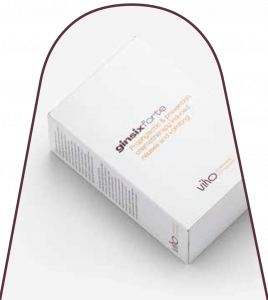
ginsix® is a compound belonging to the family of other antiemetics. Its formulation is based on ginger root, recommended product, for the WHO, for nausea and vomiting.
Chemotherapy Induced Nausea and Vomiting (CINV).
Nausea and vomiting are side effects of cancer therapy and affect most patients receiving chemotherapy. Radiation therapy to the brain, gastrointestinal tract, or liver also causes nausea and vomiting.
Nausea is controlled by a part of the autonomic nervous system that controls involuntary bodily functions (such as breathing or digestion). Vomiting is a reflex controlled in part by a vomiting center in the brain. Vomiting can be caused by smell, taste, anxiety, pain, movement, or changes in the body caused by inflammation, poor blood flow, or stomach irritation.
While the treatment of chemotherapy-induced nausea has come far in the last decades, it’s estimated that at least 70 percent of people still experience some degree of nausea during and after chemotherapy.
Focusing on Anticipatory Nausea and Vomiting (ANV).
Anticipatory CINVs are generally considered to be a conditional response to a previous episode of CINV. A sensory stimulus (e.g., sight, hearing, smell) present at the time of an CINV episode conditions the patient to associate the stimulus with nausea and vomiting.
Post-stimulus exposure triggers the conditioned response of nausea and vomiting. Prevention of acute and delayed CINVs is the best approach for anticipatory CINVs so that a sensory stimulus is not established.
Antiemetics, including the new 5-hydroxytryptamine type 3 (5-HT3) receptor antagonists, do not appear to control ANV and usually are managed with a variety of behavioural interventions as Progressive muscle relaxation with guided imagery, Hypnosis, Systematic desensitization, Electromyography and thermal biofeedback, Distraction via the use of video games… or using natural remedies like ginger.
Ginger contains a number of pungent constituents and active ingredients. The major pungent compounds in ginger are active gingerols, which can be converted to shogaols, zingerone, and paradol. The compound 6-gingerol appears to be responsible for its characteristic taste. Zingerone and shogaols are found in larger amounts in dried or extracted products.
Activities:
•Antiemetic activity: Suppressing 5-HT receptor.
•Antioxidant activity: Nrf2 signalling pathway
•Anti-inflammatory Activity: pro-inflammatory and anti-inflammatory cytokines- PI3K/Akt and NF-kB signaling.
•Antimicrobial activity: Inhibiting biofilm formation. Affecting membrane integrity.
•Neuroprotection: Anti-neuroinflammatory. Upregulating the level of NGF.
Vitamin B6, mainly in its form of biologically active coenzyme pyridoxal 5’-phosphate, is involved in a wide range of biochemical reactions, including amino acid and glycogen metabolism, nucleic acid synthesis, haemoglobin, sphingomyelin, and other sphingolipids. synthesis of the neurotransmitters serotonin, dopamine, norepinephrine and gamma-aminobutyric acid (GABA). Vitamin B6 has been known to have antiemetic effects since 1942.
